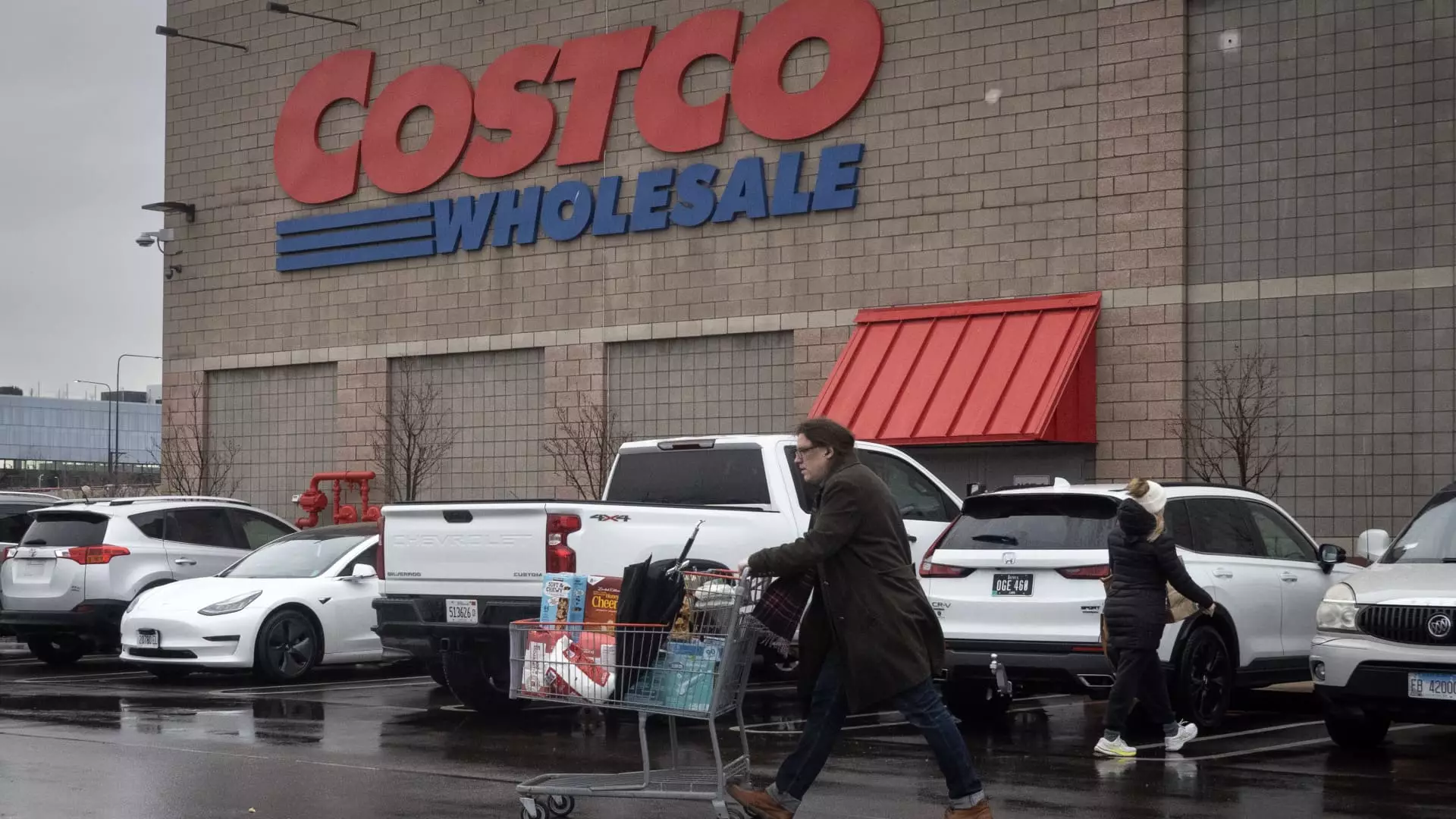Costco’s recent earnings report, while showcasing a resilient revenue performance, presents a stark reminder of the economic headwinds that continue to buffet major retailers. The wholesale giant’s second-quarter results, which featured a notable shortfall in earnings per share—$4.02 compared to the expected $4.11—may not inspire confidence among investors, especially as tariff policies loom over future pricing structures. With shares declining over 1% in after-hours trading, it is crucial to dissect the implications behind these numbers and what they signify about our economic landscape.
Revenue Growth Amidst Turbulence
Interestingly, Costco’s revenue exceeded expectations, hitting $63.72 billion—an impressive 9% increase year-over-year from $58.44 billion a year prior. This growth is particularly commendable in a time when many retailers are cautioning about the adverse impacts of tariffs on consumer prices. CEO Ron Vachris articulated a strong commitment to minimizing cost increases for its members, a sentiment that resonates in an era characterized by economic uncertainty. His assertion that “members have historically placed even greater importance on the value of high-quality items at great prices” reveals a critical insight: consumers are leaning towards value, particularly when their wallets are feeling the pinch from rising prices.
The notable resilience in comparable sales—up 6.8% year-over-year—despite a slight decline in monthly growth—from 7.5% in January to 6.5% in February—demonstrates how Costco has managed to maintain consumer loyalty even amid fluctuating economic conditions. This consumer behavior indicates a promising trend; households are still willing to spend on essentials, but they are exercising caution, as evidenced by their selective purchases.
The Tariff Dilemma: Impacts on the Retail Landscape
Vachris’s comments regarding the potential impact of tariffs paint a daunting picture. With a third of its U.S. sales coming from imports—and a significant portion of those tied to tariff-heavy regions like China, Mexico, and Canada—Costco is not immune to the escalating trade tensions. President Trump’s recent tariff increases serve as a warning signal, not just for Costco, but for the retail industry at large. Other retailers like Target and Best Buy are already predicting price increases, signaling that the broader market could soon feel the effects.
The high margins typically enjoyed in grocery sales are now “much tighter,” according to Vachris, indicating that Costco will have to engage in strategic maneuvers with suppliers to cushion the impact on consumers. Enforcing such strategies matters greatly, as consumers who are already concerned about inflation may reconsider their spending habits. If these tariffs continue to bite, it could push consumers towards discount purchases, stunting any potential growth in more premium product lines that Costco has relied upon to offset lower margins in bulk sales.
Understanding Consumer Sentiment in a Shifting Market
Even as Costco navigates through these economic hurdles, its latest quarter also highlights a complex interplay between consumer choices and spending habits. Despite acknowledging that consumers are becoming increasingly selective, CFO Gary Millerchip noted a willingness to spend on quality and innovation—echoing the important relationship between perceived value and purchasing behavior. While consumers continue to prioritize essentials, the demand for products in categories such as meat, bakery, and other fresh items, which saw growth even in challenging inflation conditions, demonstrates a shift in economic dynamics.
As inflation remains a concern, it’s critical for retailers to understand that consumers now prioritize quality over quantity. As the government implements policies that directly affect pricing and supply chains, companies that can communicate value effectively may fare better. Costco’s continued success in fortified growth categories, like high-quality proteins and fresh foods, exemplifies how well-positioned brands can leverage current market conditions to both cater to consumer demands and protect their bottom line.
While Costco’s earnings report reveals a complex tapestry of challenges and opportunities, the steadfast consumer base offers a promise. Whether or not Costco can translate this loyalty into long-term financial stability amidst uncertain economic policies will be essential to observe. The power lies in recognizing that today’s consumer consciousness is not only about prices but also about aligning purchases with quality and trust in the brand—a crucial insight for retailers aiming to thrive in these turbulent times.

